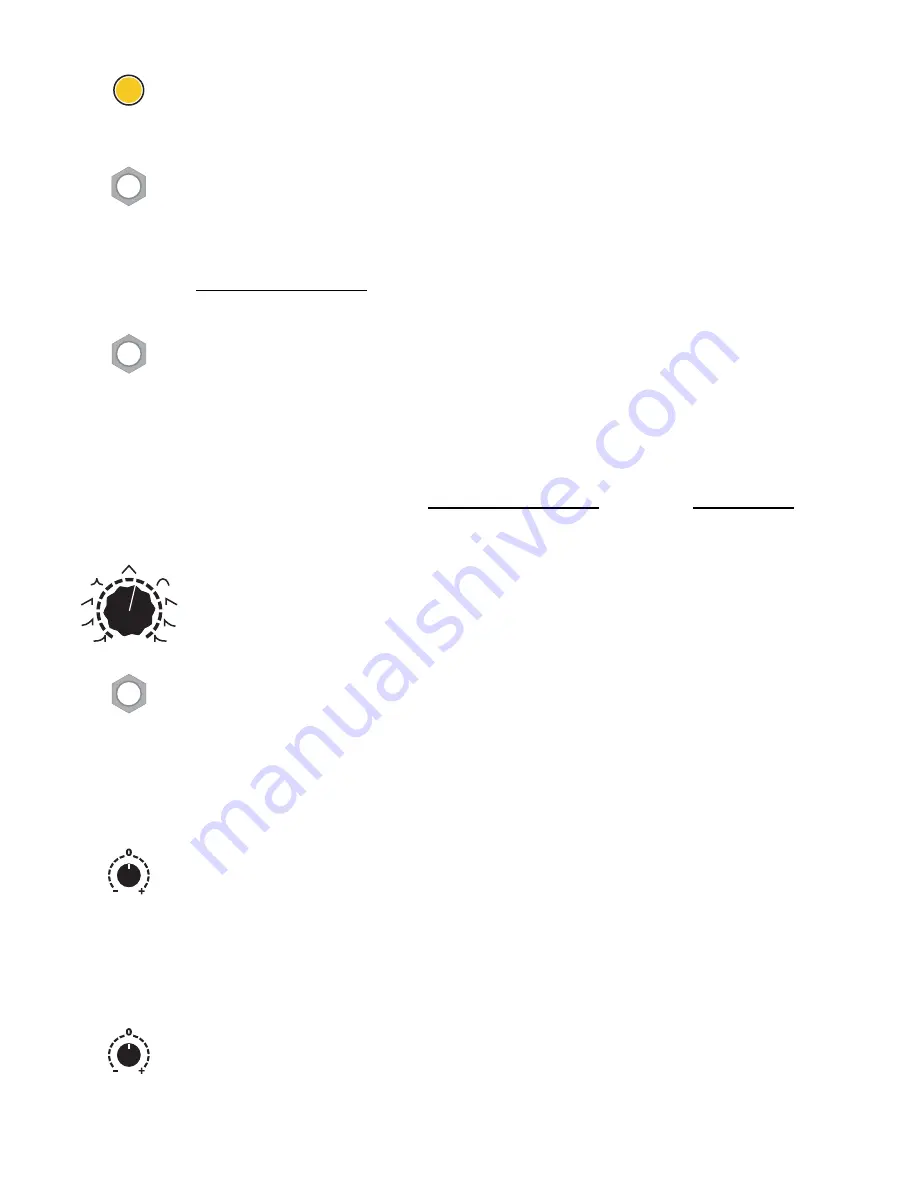
Cycle
The
Cycle
function makes the envelope self-cycle (LFO mode). When this button is lit,
the envelope will keep running without needing any external triggers. Pressing the
Cycle
button will toggle the cycle state on/off.
The
Cycle
jack toggles the cycling state. By default, when a gate is applied to this jack,
the
Cycle
button will toggle state (on
→
off and off
→
on). When the gate is released,
cycling will revert to its previous state. In System Mode, this jack can be changed to
toggle the cycling state each time it receives a trigger. So if
Cycle
is on, a trigger will
turn it off, and a subsequent trigger will turn it on again.
Depending on whether the module is in
Sync
or
Async
mode, the envelope will start
playing from a different point (starting phase) when the
Cycle
button is pushed. See
Sync and Async Modes section.
Trigger
The
Trigger
jack initiates an envelope when a trigger is received. By default, the
envelope starts immediately and the module is put into
Async
mode. Holding the trigger
high will have no effect. In System Mode, this jack can be configured as a Quantized
jack, so that receiving a trigger will cause an envelope to output on the next ping clock.
When used this way, the module will be put into
Sync
mode when it receives a trigger.
Holding the
Trigger
jack high will cause the envelope to cycle until released.
The jack can also be configured as an Async Gate jack. This is the same as the default
behavior (Async Trigger), but the envelope will sustain if the gate is held high past the
end of the rise phase. When the gate is released, the fall stage will start.
Async modes allow you to re-trigger an envelope that’s already running, while the
Quantized mode does not. See Sync and Async Modes section and System Mode
sections.
Shape
The
Shape
knob and jack control both the skew (or ratio of rise to fall times) and the
selection of waveshapes (logarithmic, linear, exponential). While there is a continuous
spectrum of waveshapes, the range can be divided into three zones.
The first zone is from fully counter-clockwise to around 9:30. Turning the knob
clockwise, the envelope starts as a ramp-up exponential shape and slowly turns to a
linear ramp-up shape.
The transition from the first zone to the second zone goes from a ramp-up linear shape
to a balanced exponential shape (equal rise and fall times) at about 10:00.
The second zone begins with the balanced expo shape. It then transitions to a balanced
linear shape at the knob’s center position, and then to a balanced log shape at about
2:00.
The transition to the third zone turns the balanced log shape into a ramp-down linear
shape at about 2:30
The third zone mirrors the first zone, going from ramp-down linear to ramp-down
exponential.
The CV jack ranges from -5V to +5V and offsets the knob’s position.
Scale
The
Scale
knob is an attenuverter for the main envelope output,
ENV OUT
. If the scale
knob is right of center, the output voltage will increase when the envelope is in the rise
phase, and decrease when the envelope is falling (non-inverted). This is normally how
envelopes are used. If the
Scale
knob is left of center, the envelope will be inverted and
the output voltage will decrease as the envelope rises, and increase as it falls.
As you turn
Scale
towards center, the amplitude will decrease, moving the peaks
towards zero. At center, there will be no output (technically, it produces a steady DC
voltage which is set by the
Shift
feature).
Offset
The
Offset
knob shifts the envelope on the
ENV OUT
jack up and down by adding DC
offset. The offset is applied
before
Scale
is applied. For a positive-only envelope,
Offset
would typically be set at maximum, and
Scale
should be right of center. For a bi-
polar envelope,
Offset
should be set to center. For a negative-only envelope (non-
inverted),
Offset
should be set to minimum.
Page of
5
12
Cycle
Cycle
Trigger
Shape
Shape CV
Scale
Offset
























